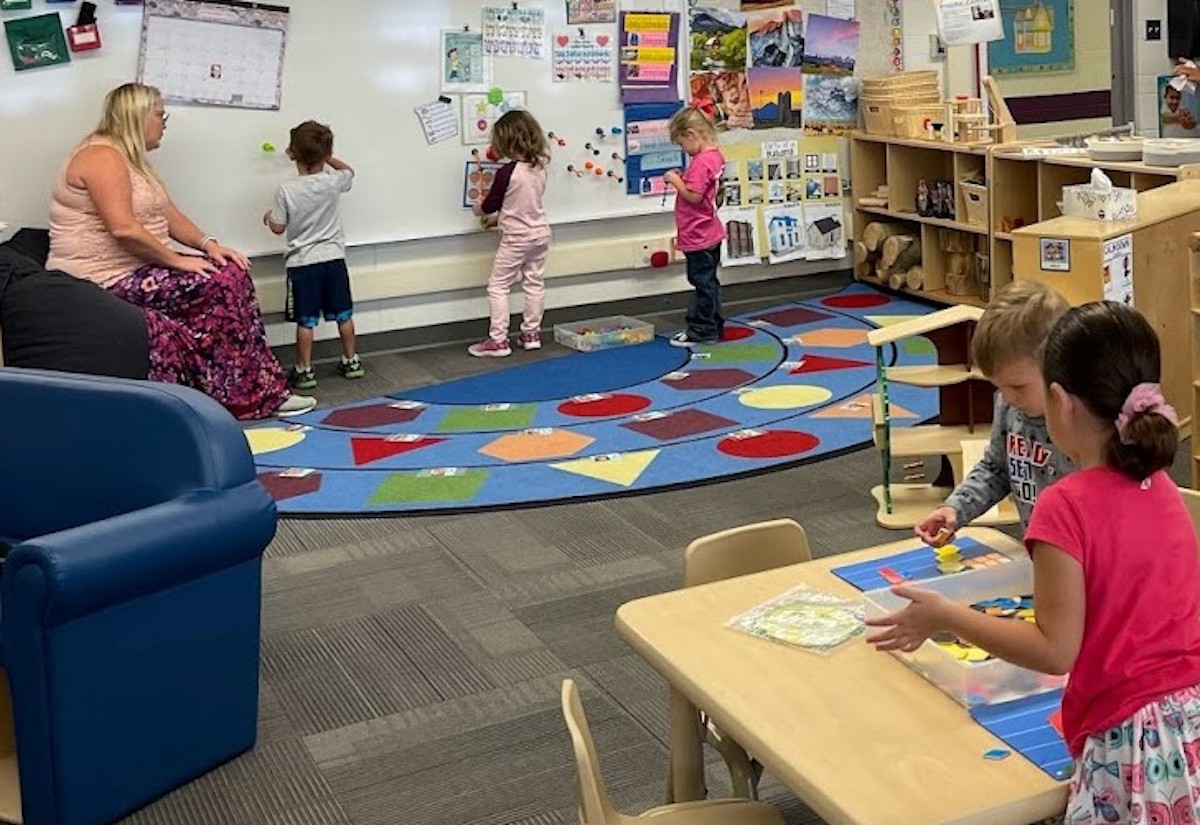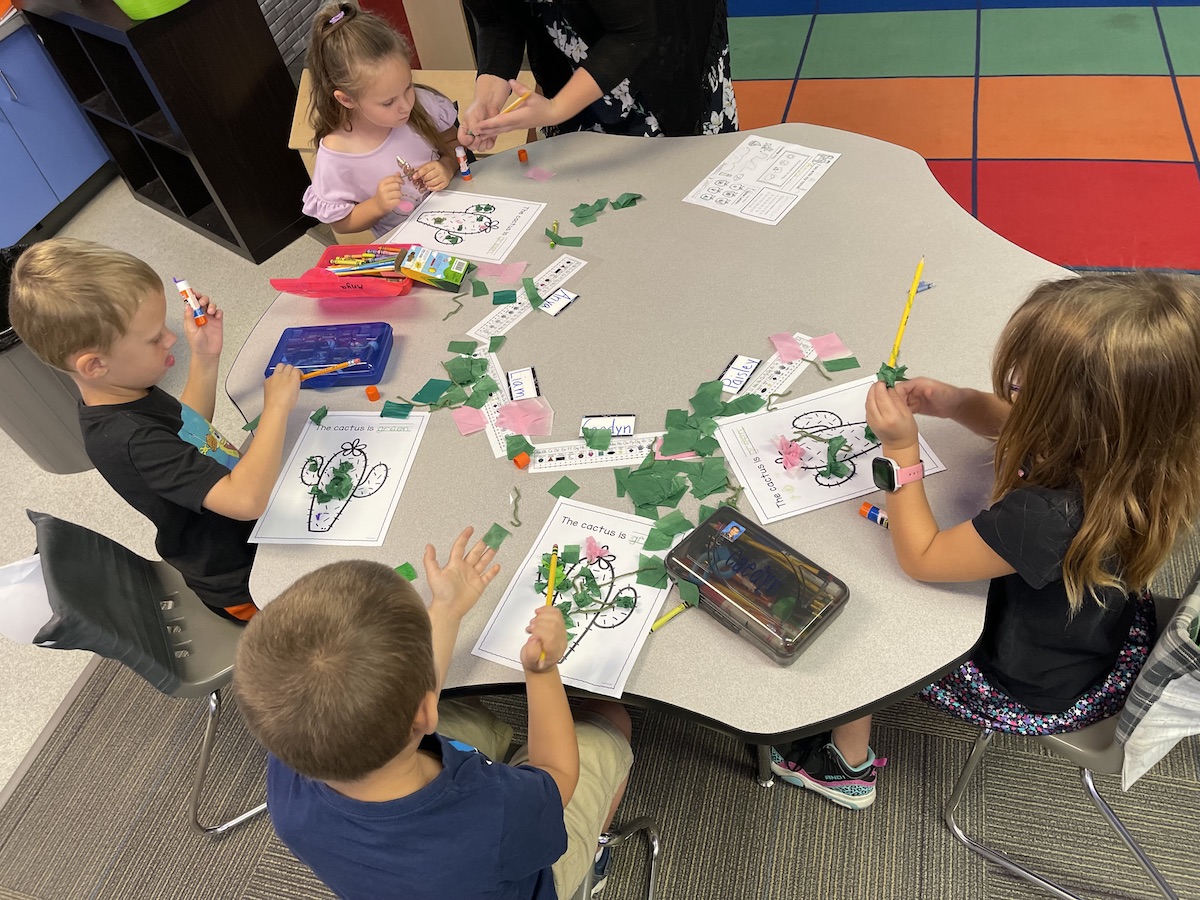Numa students work on solving multi-step word problems and created posters to show their work.
CCHS & CCMS
The CCHS Mentor Program has kicked off for the 2022-23 school year. This program was started in 2020 by CCHS graduate Kalea Lattin, who wanted to create a mentor program for incoming freshmen and new students.
She saw a need for student connections and wanted a better way to get students engaged. At the time CCHS teacher Heather Benjamin was moving to the high school from the middle school and was looking for ways to build a better bridge between the two schools.
“Together, Kalea and I were able to meld our goals and create this program that teaches the mentors to help others socio-emotionally, academically, and socially,” Benjamin said.
There are 14 mentors available to support students at CCMS and CCHS. These students are exemplifying what it means to be global citizens – impacting the Churchill County School District community by helping other students.
“I want to help younger kids have a better school life because it is draining and exhausting, but having a mentor can be extremely helpful,” said mentor Brady Alves.
Mentor Nicole Nelson agrees and said she wants to help as many students feel more comfortable coming into a new school or grade. The overall goal of the program is to give both mentors and mentees opportunities to build strong, lasting relationships and skills that can be used throughout their lives.
“My hope is for the mentees to become future mentors and pass on what they learned from their own experiences,” Benjamin said.
If you know a student who would be interested in having a mentor, email cchsmentor@churchillcsd.com
 Courtesy
Courtesy
Northside Early Learning Center students learn to explore the classroom in their own way.
Then, the class completed a gallery walk to peruse each poster and make comments using “math talk” vocabulary to agree, disagree, or ask their peers to clarify their thinking. Student Jaxson Lister said he really liked this activity because it helped him be an even better learner.
“I liked that other kids in the class can see the answers and we were all able to learn from each other,” he said.
Another student, Emerson Weldon-Ward, agreed. “I liked it because as I walked around I was able to see different strategies of how my classmates do the word problems,” he said. Courtesy
Courtesy
Kindergarten students at Lahontan Elementary School use tissue paper and glue to get a more elaborate and creative outcome.
E.C. Best
Second-grade students in Juliann Lambson’s class were critical thinkers and made Play-Doh for national Play-Doh day as an extension activity for literacy. The class read an article and learned about the inventor of Play-Doh and how it originated as a tool for cleaning wallpaper.
“After we talked about if Play-Doh would make a better wallpaper cleaner or toy for kids we made some as a class,” Lambson said.
The students read off the directions and Lambson made it. Then each student got to tell her what color of food coloring they wanted and how many drops they wanted to make it lighter or darker. To make their Play-Doh they used flour, water, salt, oil, and cream of tartar.
“We talked about each ingredient and how it affected the dough. The cream of tartar makes it fluffy, the salt keeps mold from growing, the oil keeps it soft,” Lambson said.
Lahontan
Kindergarten students in Allison Lister's class were inspired innovators when they decided to do something other than color their cactuses last week. Instead, they used tissue paper and glue to get a more elaborate and creative outcome. Lister said her students have been doing really well only focusing on one color each week.
“They are starting to recognize the different beginning and ending sounds of each color because when we are learning our color of the week, we are also learning the corresponding letter and they start connecting the letters with the colors they already know,” Lister said.
Northside
Last week students in Tresa Pursley’s class were learning the importance of free play. Pursley created different stations in her classroom and gave students the opportunity to explore the classroom in their own way. This helps foster students' creativity and innovative thinking and encourages them to use their imagination in ways they typically would not in a traditional classroom setting.
Pursley was one of eight finalists recognized by the Nevada Department of Education recognized as one of the finalists for the Nevada 2021 Early Childhood Educator of the Year award.
“We were thrilled to see Tresa as one of the finalists for this recognition. The work she does in her classroom is vital for our youngest students to become lifelong learners,” said Superintendent Summer Stephens.
 Courtesy
Courtesy Courtesy
Courtesy